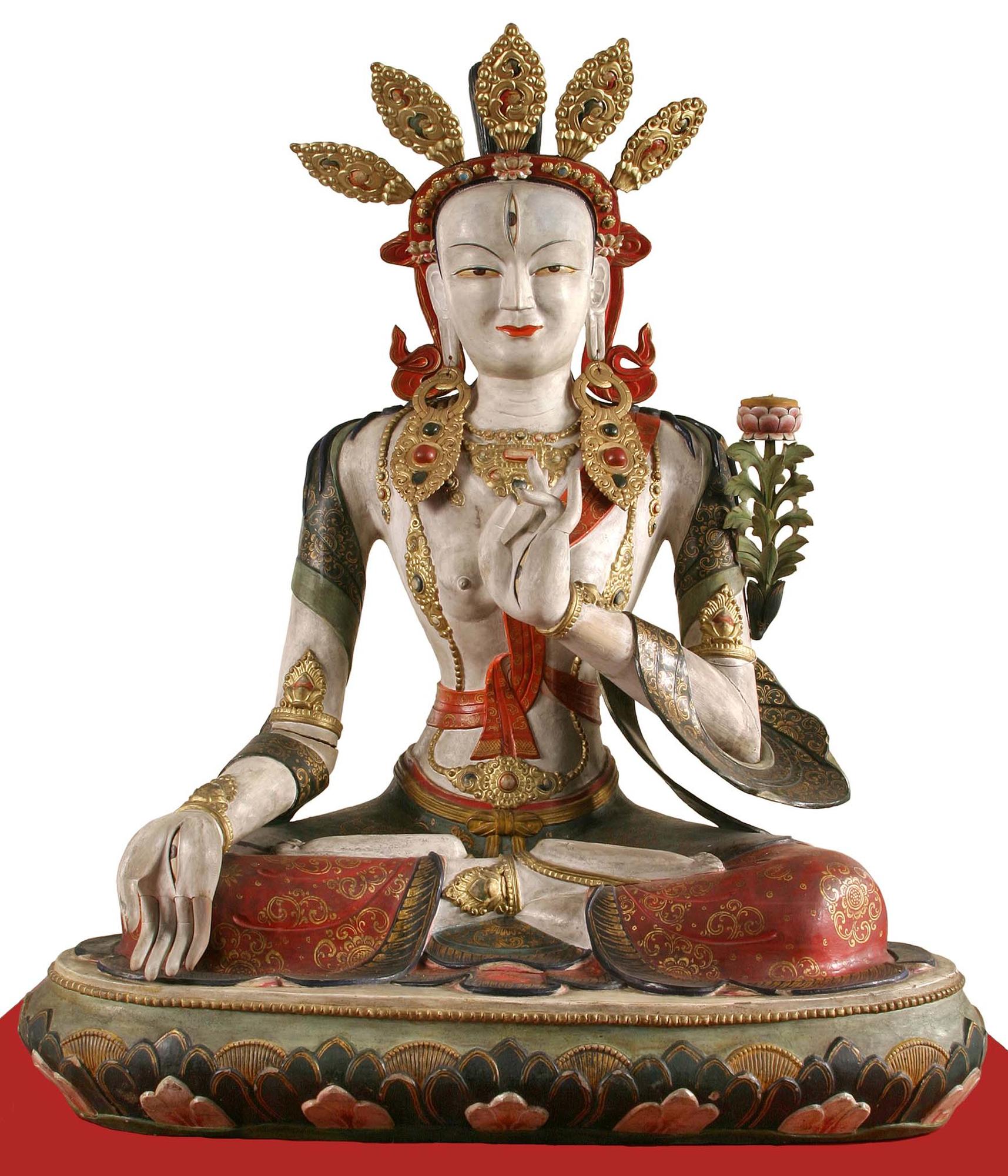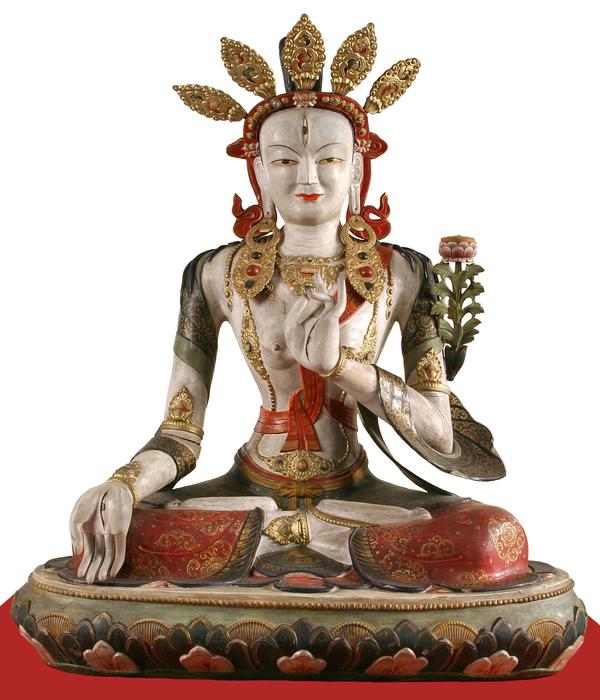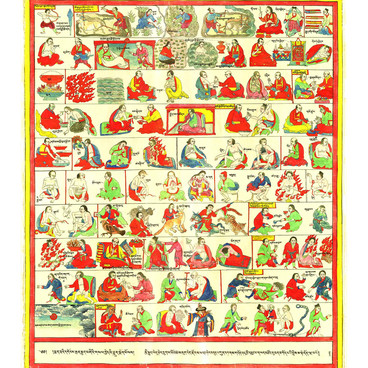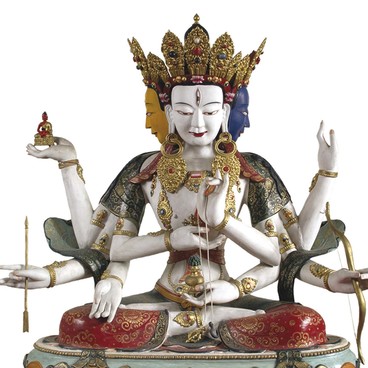White Tara, Sitatara (Sanskrit), Sagaan Dara-Ehe (Buryat) is the most popular female character of the pantheon, the embodiment of ‘infinite compassion’. Along with Avalokitesvara (from whose tear she was born, according to the legend) Tara is a guardian of a human race who protects it from dangers. According to the legend, she came to Earth in the image of a Chinese emperor’s daughter who became a wife of the first Tibetan king Songtsen Gampo (he promoted the Buddhism’s spread around his country). In Russia Buddhists regarded empress Catherine the Great as a White Tara’s incarnation for her protectorship of the regional Buddhism.
White Tara is perched at the lotus throne showing a “giving” sign with her hand and keeping a lotus flower in her left hand. The goddess is also called the “Seven-eyed” as she has three eyes on her face, each on her palm and foot. It is believed that the eyes are the ways out of her “cosmic compassion” to all living creatures, she sees everything that’s going on and shows her support to the distressed ones. She is also respected as the patron of the family hearth, maternity happiness and the female principle. She is included into the ‘triplicity of the longevity gods’ along with Buddha Ayusha and bodhisattva Zugdair Namzhilma. It is believed that the one who practices White Tara’s mantra prolongs their lifespan, gets prosperity and wisdom.
The sculpture was made by an outstanding Buryat sculptor, lama philosopher Sanji-Tsybik Tsybikov in late 19th — early 20th century. S.-T. Tsybikov is a founder of the first professional school of the Buddhist wooden sculpture in Buryatia. An artist preferred to work in a mixed technique using wood, papier-mache and copper for certain elements.
Yangazhinsky datsan (late 19th — early 20th century) can be considered the main artist’s work. This datsan is unique as the whole monastery complex with its nine temples-dugans and their interiors, outside décor, plastic and pictorial works was build and decorated by the artists of Yangazhinsky congregations. It was this very datsan where this sculpture of White Tara was brought from in late 1930’s.
White Tara is perched at the lotus throne showing a “giving” sign with her hand and keeping a lotus flower in her left hand. The goddess is also called the “Seven-eyed” as she has three eyes on her face, each on her palm and foot. It is believed that the eyes are the ways out of her “cosmic compassion” to all living creatures, she sees everything that’s going on and shows her support to the distressed ones. She is also respected as the patron of the family hearth, maternity happiness and the female principle. She is included into the ‘triplicity of the longevity gods’ along with Buddha Ayusha and bodhisattva Zugdair Namzhilma. It is believed that the one who practices White Tara’s mantra prolongs their lifespan, gets prosperity and wisdom.
The sculpture was made by an outstanding Buryat sculptor, lama philosopher Sanji-Tsybik Tsybikov in late 19th — early 20th century. S.-T. Tsybikov is a founder of the first professional school of the Buddhist wooden sculpture in Buryatia. An artist preferred to work in a mixed technique using wood, papier-mache and copper for certain elements.
Yangazhinsky datsan (late 19th — early 20th century) can be considered the main artist’s work. This datsan is unique as the whole monastery complex with its nine temples-dugans and their interiors, outside décor, plastic and pictorial works was build and decorated by the artists of Yangazhinsky congregations. It was this very datsan where this sculpture of White Tara was brought from in late 1930’s.




